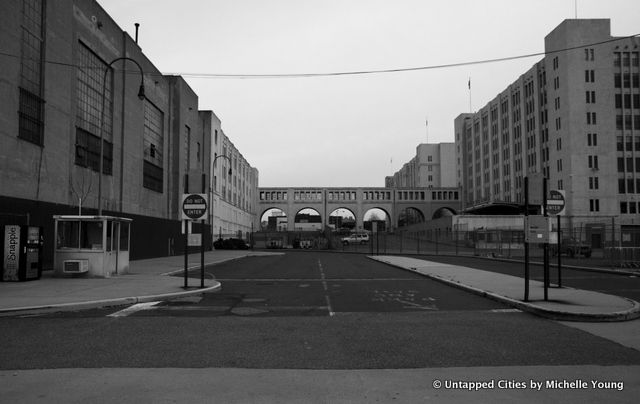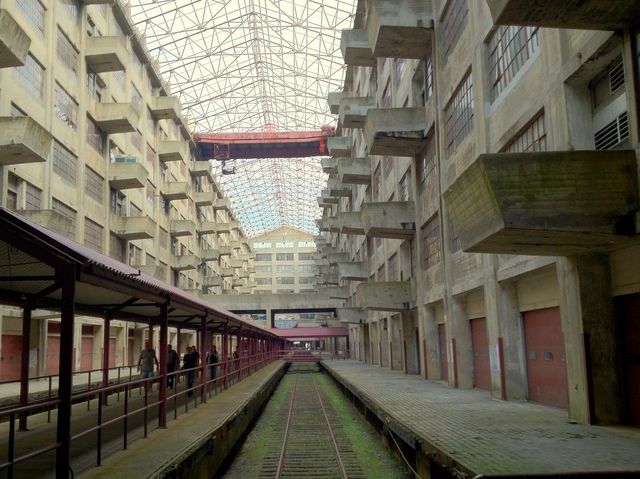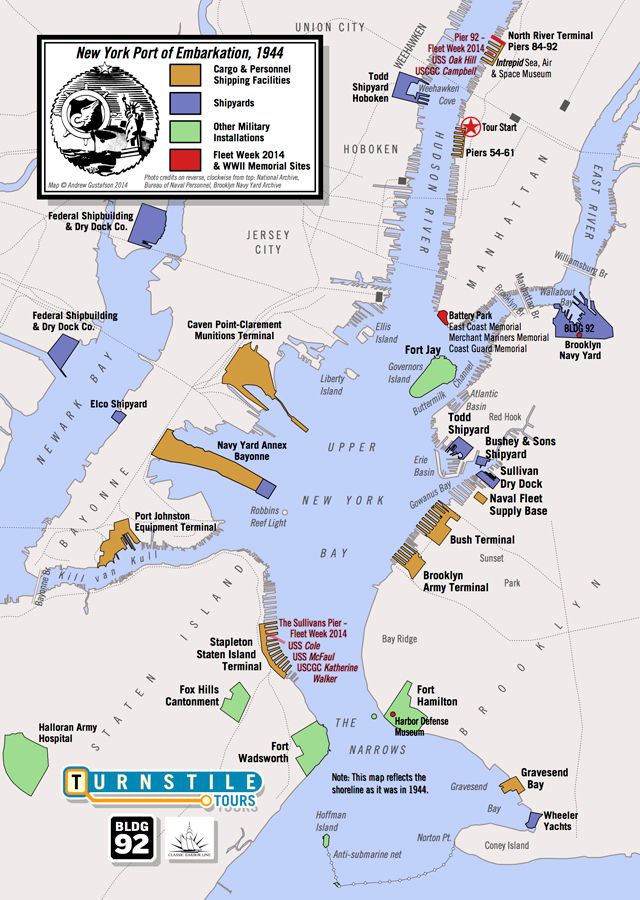Last-Minute NYC Holiday Gift Guide 🎁
We’ve created a holiday gift guide with presents for the intrepid New Yorker that should arrive just in time—



This is the final installment of our 3-part series on the Brooklyn Army Terminal. We’ve looked into where Elvis would have walked when he embarked, whether the place is abandoned, and what the deal is with the balconies in the main atrium. We hope you’ll join us for our upcoming Brooklyn Army Terminal tour on Sunday, October 26th, tickets below.
Brooklyn Army Terminal – that’s part of Industry City, right?

Brooklyn Army Terminal atrium. Image by Andrew Gustafson
No. The immense stretch of industrial buildings that covers the Sunset Park waterfront can often look like one enormous complex, but historically and today, there are a number of distinct properties. The Brooklyn Army Terminal includes only the buildings located between 58th St and 65th St, and between 2nd Ave and the water. All of these are owned by the City of New York and operated by the NYCEDC.
Just a bit to the north of BAT is an area known as the Bush Terminal, a huge manufacturing and shipping complex that opened in 1895 and stretched from 32nd St to 53rd St. Today, the historic Bush Terminal has been broken up into two properties – the southern portion, roughly between 40th St and 53rd St on the waterfront is owned by the City of New York and is known as the Bush Terminal Industrial Campus. The northern portion – 32nd St to 40th St – is owned by a private developer, who has rebranded their complex as Industry City. Another former military site, the Naval Fleet Supply Base, located between 29th St and 31st St and 2nd and 3rd Aves, now has one building owned by a private developer and is called Liberty View Industrial Plaza, while the other building has been modified and rebuilt to house the Brooklyn Metropolitan Detention Center (MDC), a federal jail.
The Brooklyn Army Terminal sent 3.2 million soldiers and 37 million tons of supplies overseas in World War II.
 Credit: Andrew Gustafson
Credit: Andrew Gustafson
No. These oft-quoted figures refer to the number of personnel and supplies that passed through the New York Port of Embarkation (NYPoE), which was a vast network of dozens of piers, warehouses, staging areas and depots that covered the entire region. New York was by far the busiest harbor in the country during World War II, nearly doubling the output of the second-largest port, San Francisco, but the action was not just at the Brooklyn Army Terminal; places like Stapleton, Staten Island, the piers of Manhattan’s West Side, and Bayonne, New Jersey were also critical loading points for war materiel and men.
There are two main reasons why BAT gets undue credit for the enormous logistical efforts of the Port of Embarkation. First, it was the headquarters of the NYPoE, so most of the coordination and decision making was done within its walls; and second, most of the other facilities were no longer needed after the war and closed. BAT was one of the only Army port facilities that remained open, and it became the primary port of embarkation in the post-war period, so it reaped all the credit for the war effort. In reality, places like the Stapleton Piers in Staten Island and the Bush Terminal, located just a few blocks north of BAT in Sunset Park, moved far more men and supplies during the war. BAT was responsible for something in the range of 20% of the total troop and supply movement for the NYPoE.
Check out our earlier installments to fid out where Elvis would have walked when he embarked, whether the place is abandoned, and what the deal is with the balconies in the main atrium
Andrew Gustafson is the vice president of Turnstile Tours, a company that offers tour around New York City in partnership with non-profit organizations.
Subscribe to our newsletter